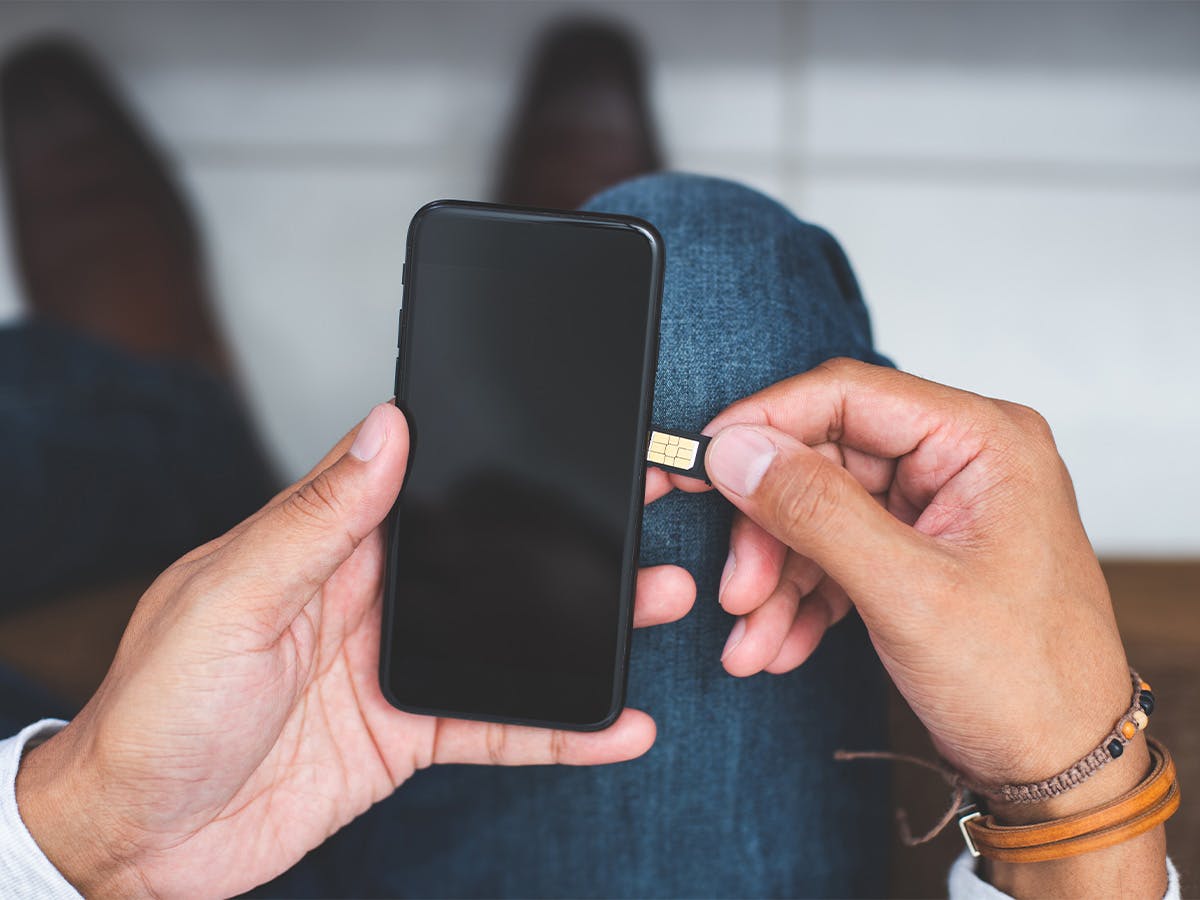
IN THE KNOW

WHAT IS CELL PHONE FRAUD?
MARCH 28, 2024 | FRAUD PREVENTION
Cell phones have become integral to our daily lives. They connect us to friends and family, social media, schedules, financial accounts, and more. With the right tools, fraudsters can use our cell phones to gain access to this information as well.
There are three primary types of cell phone fraud: SIM swapping and port-out scams, SIM cloning, and subscriber fraud. We’ll take a look at each one and discuss the steps you can take to protect your personal information and accounts.
SIM SWAPPING & PORT-OUT SCAMS
Cell phones rely on SIM cards to identify and authenticate the device to a cellular network and store data such as contacts and text messages. This is what connects your phone number and service provider to your physical phone.
When you switch cell service providers or upgrade your device, your SIM card can be used to transfer your phone number and data to your new provider or phone. This can be done by physically transferring your SIM card from one device to another or by initiating a porting request with your new service provider.
Fraudsters use SIM swapping and port-out scams to gain access to your phone number. They may physically steal the SIM card from the victim’s phone and then transfer it to their own device, or with enough personal information, they can initiate a fraudulent porting request with the victim’s service provider.
If successful, the fraudster gains control over the victim’s phone number, texts, and calls and can use this access to reset credentials for the victim’s financial accounts and social media accounts. The fraudster can then drain the victim’s bank accounts and sell or ransom their social media data.
HOW TO PREVENT SIM SWAPPING & PORT-OUT SCAMS
Keep your phone secure. If you lose your phone, notify your bank and cell service provider.
When you change devices, always wipe and factory reset your old device.
Enable both email and text notifications for financial accounts. If you receive a notice that changes to your account have been made without your knowledge, contact the financial institution immediately.
Don’t overshare. Keep personal details that could be used to verify your identity, such as your phone number, date of birth, or your pet’s name, off social media.
If you suddenly lose service on your device, you may have been the target of a port-out scam. Contact your service provider and bank immediately and then file a police report and place a fraud alert on your credit reports.
SIM CLONING
Every cell phone has a unique electronic serial number (ESN) and a mobile identification number (MIN).
Fraudsters can reprogram their cell phone to transmit the ESN/MIN combinations of another cell phone. Once the ESN/MIN combination has been cloned, cell service providers cannot distinguish the fraudulent cell phone from the legitimate one. The fraudster can then incur expensive charges on the legitimate subscriber’s bill.
HOW TO PREVENT SIM CLONING
Review your cell phone bill each month. Alert your service provider if you see any unauthorized charges on your account.
SUBSCRIBER FRAUD
Fraudsters can obtain your personal information and use it to open a new cell phone account in your name. It can take time to discover that subscriber fraud has occurred and to resolve the issue.
HOW TO PREVENT SUBSCRIBER FRAUD
Keep your personal information secure. Never disclose your log in credentials for online banking to anyone and keep personally identifying information off social media.
Check your credit reports regularly. Review the accounts listed on your reports to ensure they are legitimate and investigate any unexpected changes to your credit score. You can check your credit reports from the three major credit reporting bureaus for free at .
If you think you have been a victim of subscriber fraud, file a police report, notify both your current cell service provider and the provider for the fraudulent account, and place a fraud alert on your credit reports.
Knowledge and vigilance are key in protecting yourself from fraud. Keep tabs on your accounts and don’t hesitate to contact your bank if you suspect you may be a target of fraud.